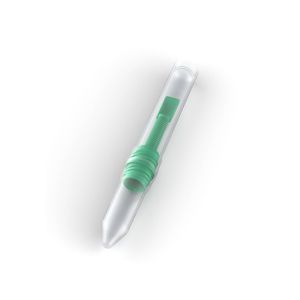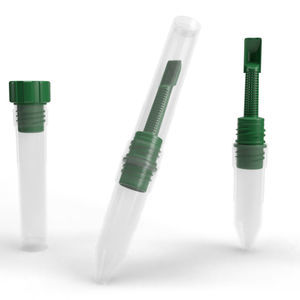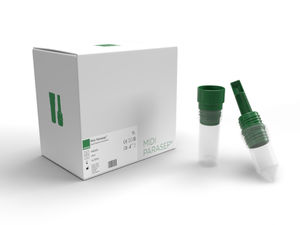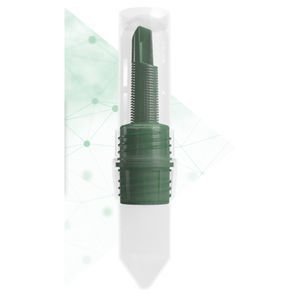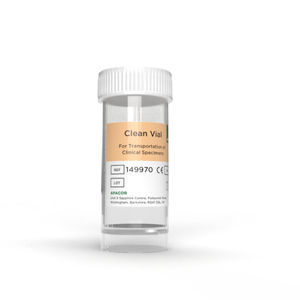
- Laboratory
- Laboratory medicine
- Stain reagent
- Apacor Ltd.
Stain reagent for parasitology
Add to favorites
Compare this product
Characteristics
- Type
- stain
- Applications
- for parasitology
Description
This stain is useful for the detection of motile trophozoites of Entamoeba species
ACRIDINE ORANGE (ACETATE BUFFERED)
The addition of Acridine Orange to a faecal concentrate highlights the chromidial bars of Entamoeba coli, Entamoeba histolytica/dispar and Entamoeba hartmanni, which fluoresce bright green.
AURAMINE PHENOL (LEMPERT)
Method
1. Make faecal smears as for ZN and fix in methanol.
2. Stain with Auramine-Phenol (Lemperts) for 10 – 15 min.
3. Rinse thoroughly in tap water.
4. Decolourise in acid alcohol (as for ZN).
5. Rinse thoroughly in tap water.
6. Counterstain with 0.1% potassium permanganate for 30 sec.
7. Rinse thoroughly in tap water, allow to air dry. Do not blot dry, many brands of blotting paper will fluoresce!
Results in Oocysts appearing as bright yellow discs against a dark background.
FIELD’S STAIN SOLUTION A AND SOLUTION B
N.B. Both solutions are ready for use and should not be diluted.
This technique is a rapid Field’s stain method, which enables rapid staining of fixed thin films of various clinical samples. This particular method is very useful for staining films of unformed faeces, faecal exudates, duodenal aspirates etc.
Method
1. Make a thin film of faeces/exudate and allow to dry.
2. Fix in methanol for 1 min.
3. Flood slide with 1 ml of Field’s Stain B .
4. Immediately add an equal volume of Field’s Stain A mix well on slide and allow to stain for 1 min.
5. Rinse well in tap water and drain dry.
6. Examine the film using the oil immersion objective and immersion oil
Results
Parasite nuclei and structures containing chromatin – red
Cytoplasm – bluish-grey
Leucocyte nuclei – purple
Yeasts and bacteria – dark blue
Catalogs
No catalogs are available for this product.
See all of Apacor Ltd.‘s catalogsRelated Searches
- Solution reagent kit
- Blood rapid diagnostic test
- Rapid lateral flow test
- Immunoassay rapid diagnostic test
- Rapid virus test
- Infectious disease rapid diagnostic test
- Dye reagent
- Urine rapid diagnostic test
- Test strip
- Bacteria rapid diagnostic test
- Microbiology reagent kit
- Rapid feces test
- Electrolyte reagent kit
- Blood test strip
- Sodium reagent kit
- Oncology rapid diagnostic test
- Adenovirus rapid diagnostic test
- Rapid Helicobacter pylori test
- Preservative reagent kit
- Rotavirus rapid diagnostic test
*Prices are pre-tax. They exclude delivery charges and customs duties and do not include additional charges for installation or activation options. Prices are indicative only and may vary by country, with changes to the cost of raw materials and exchange rates.


